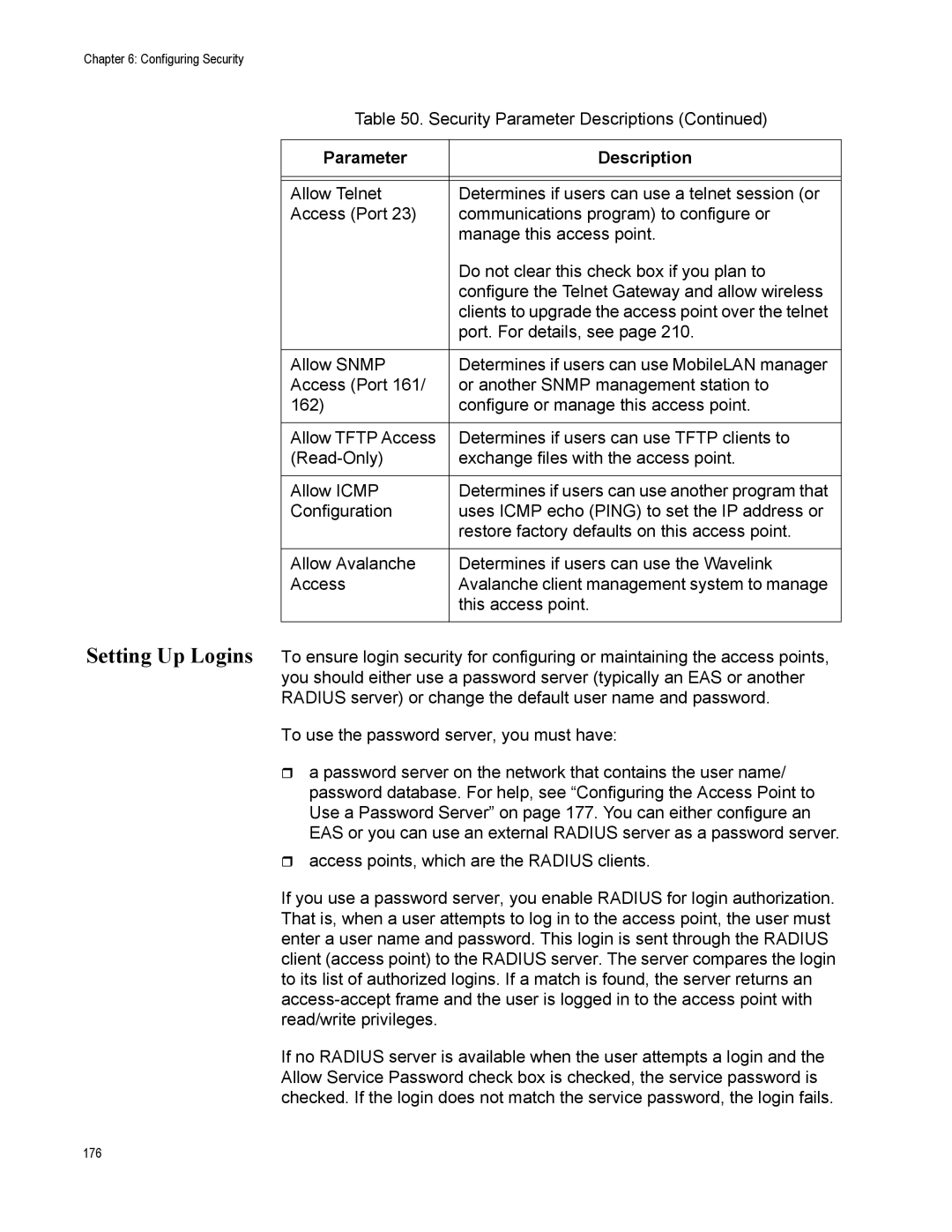Chapter 6: Configuring Security
Table 50. Security Parameter Descriptions (Continued)
Parameter | Description |
|
|
|
|
Allow Telnet | Determines if users can use a telnet session (or |
Access (Port 23) | communications program) to configure or |
| manage this access point. |
| Do not clear this check box if you plan to |
| configure the Telnet Gateway and allow wireless |
| clients to upgrade the access point over the telnet |
| port. For details, see page 210. |
|
|
Allow SNMP | Determines if users can use MobileLAN manager |
Access (Port 161/ | or another SNMP management station to |
162) | configure or manage this access point. |
|
|
Allow TFTP Access | Determines if users can use TFTP clients to |
exchange files with the access point. | |
|
|
Allow ICMP | Determines if users can use another program that |
Configuration | uses ICMP echo (PING) to set the IP address or |
| restore factory defaults on this access point. |
|
|
Allow Avalanche | Determines if users can use the Wavelink |
Access | Avalanche client management system to manage |
| this access point. |
|
|
Setting Up Logins To ensure login security for configuring or maintaining the access points, you should either use a password server (typically an EAS or another RADIUS server) or change the default user name and password.
To use the password server, you must have:
a password server on the network that contains the user name/ password database. For help, see “Configuring the Access Point to Use a Password Server” on page 177. You can either configure an EAS or you can use an external RADIUS server as a password server.
access points, which are the RADIUS clients.
If you use a password server, you enable RADIUS for login authorization. That is, when a user attempts to log in to the access point, the user must enter a user name and password. This login is sent through the RADIUS client (access point) to the RADIUS server. The server compares the login to its list of authorized logins. If a match is found, the server returns an
If no RADIUS server is available when the user attempts a login and the Allow Service Password check box is checked, the service password is checked. If the login does not match the service password, the login fails.
